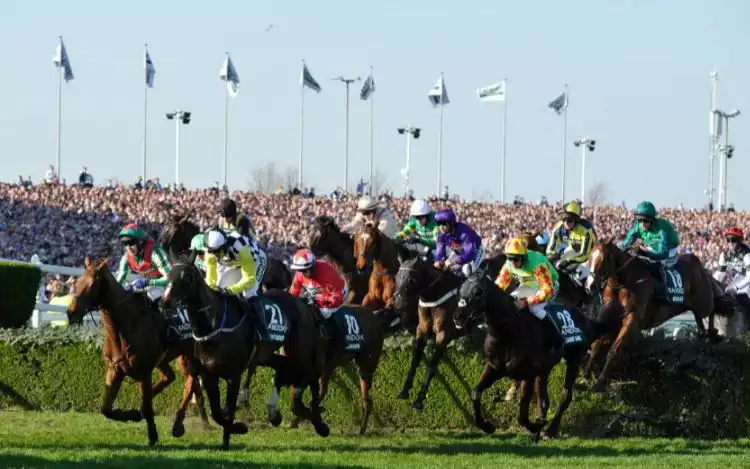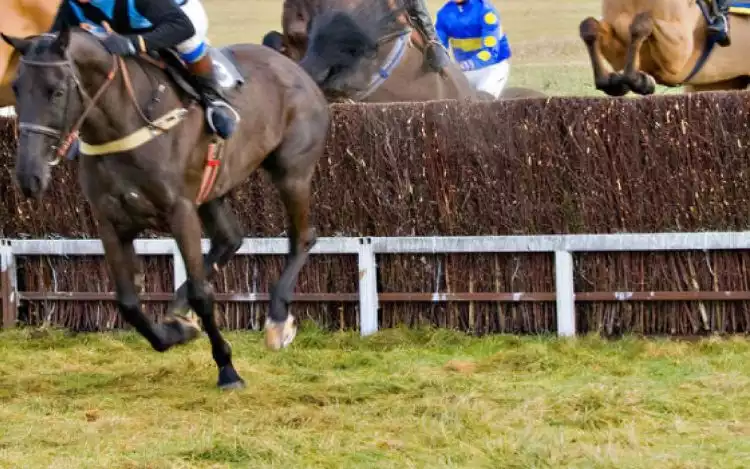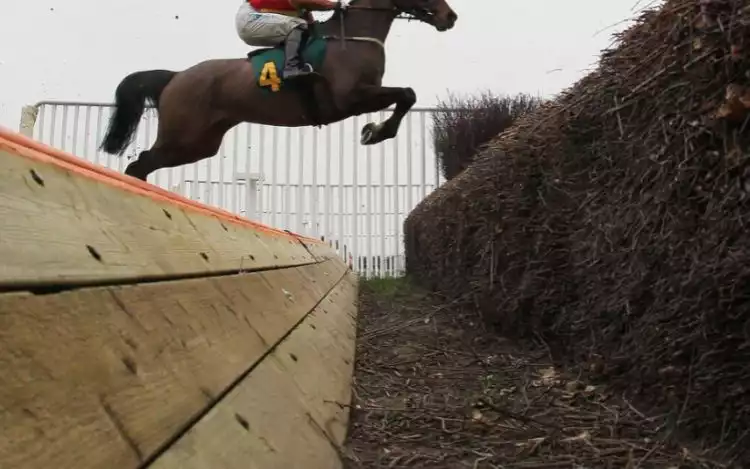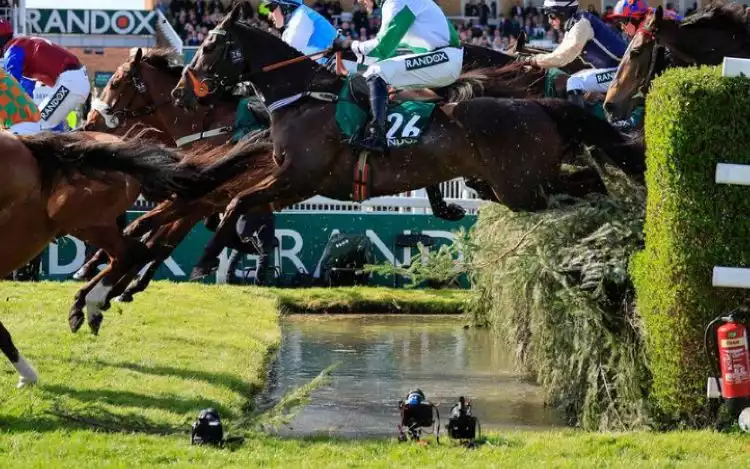Steeplechase Horse Racing Guide
Steeplechase racing, also simply known as chase racing, is physically challenging and requires horses to jump large obstacles. In this Gambling Zone steeplechase racing guide, we provide you with a comprehensive view of the sport, delving into its historical roots and equipping you with valuable betting strategies.
What is Steeplechase Racing and How does it work?
Unlike flat racing, steeplechase racing presents horses with a series of formidable obstacles to navigate. These obstacles include solid fences, hurdles, and ditches, and they come in various shapes and sizes. The minimum height of the jumps is set at least 4ft 6in tall, but in practice, they can be even higher, demanding exceptional jumping ability from the horses.
The steeplechase season is a significant part of the National Hunt racing calendar. The season runs from autumn through spring and features numerous prestigious races. Jockeys who specialise in this type of horse racing are renowned for their skill in guiding horses over these challenging jumps, making split-second decisions, and maintaining their balance throughout the race.
Some famous steeplechase races that capture the nation's attention include the Grand National at Aintree, the Cheltenham Gold Cup, and the Irish Grand National.
Best Sites for Steeplechase Racing Betting Online
10bet
100% up to €50
Sports Welcome offer
Betway
Get up to €50 in Free Bets
If your first bet loses
+ 50 Bonus Spins
Brief History of Steeplechase Horse Racing
Steeplechase horse racing is where horses and riders race against time while clearing various obstacles. Its origins can be traced back to 18th-century Ireland when two friends, Cornelius O'Callaghan and Edmund Blake, made a legendary wager to settle a dispute. They challenged each other to a race from one church steeple to another, spanning approximately four and a half miles of rugged terrain Following this, riders would compete from one church to another, surmounting creeks, fences, and fallen trees along the way. The term "steeplechase" originates from this steeple-to-steeple tradition.
Modern steeplechase racing differs from the open courses of the past. The obstacles are now fixed, identical for all competitors, and as horse betting now takes place it is also carefully regulated by the British Horseracing Authority. However, variations exist depending on the location. Different countries have distinct traditions regarding the types of obstacles used, and some races involve head-to-head competition, while others focus on individual racers against the clock.
Steeplechase racing, in all its forms, is most popular in Ireland, the UK, the US, Canada, and Australia. Riders dedicate significant time to training their horses and teaching them to jump precisely and efficiently. This cherished equestrian tradition continues to captivate audiences and remains a beloved and enduring sport in various corners of the world.
Steeplechase Racing Formats
Steeplechase racing adheres to specific standards to qualify as a steeplechase event. In the United Kingdom, a race must feature a minimum of 12 fences to be classified as a steeplechase. Races run over distances exceeding 2 miles must include an additional six fences per mile. The composition of these fences plays a crucial role in defining the challenges within steeplechases. The distances will also affect how to bet on horse racing, as it can not solely be judged on speed, but also stamina.
Steeplechase fences come in three primary types:
Plain Fences
Comprising wooden or steel frames filled with real or artificial birch, these fences stand at a minimum height of 4 feet 6 inches, requiring horses to clear them.
Open Ditches
These fences incorporate a plain fence followed by a ditch on the take-off side. The presence of open ditches intensifies the challenge, requiring one open ditch per mile on a chase track.
Water Jumps
Featuring a fence of at least 3 feet in height, water jumps include a water-filled ditch measuring at least 9 feet across. Races may include only one water jump, even in the most demanding events.
Steeplechase Race Horses

Steeplechase racehorses are celebrated for their athleticism and stamina, and often extend their racing careers well into their senior years, with horses over the age of 10 not being an unusual sight in these events.
In contrast to flat racing, where male competitors primarily consist of colts or stallions, male steeplechase race horses typically undergo gelding (castration). This practice helps manage their behaviour and channel their energy toward racing pursuits.
Steeplechase racehorses are meticulously bred and rigorously trained for specific distances. These distances span from races around the 2-mile mark to middle-distance contests of approximately 3 miles, and even gruelling long-distance races covering 3.5 miles or more.
Given the extraordinary endurance and skill demanded by steeplechase events, horses often begin their careers in the less demanding hurdles format of National Hunt racing, gradually transitioning to chase races. This careful progression ensures that they are well-prepared to navigate the unique challenges of steeplechase racing, resulting in a competitive and exciting sport.
Steeplechase Racing Popularity

Steeplechase racing is a distinctive tradition in Ireland and stands apart from flat racing in several ways. These races are known for covering longer distances, often over varying terrains and formidable obstacles. This can open up more betting opportunities with different horse racing bet types compared with other horse racing events.
One prominent event in the world of steeplechase racing is the Cheltenham Festival, which showcases the sport's enduring appeal. While steeplechase events may not always draw the same colossal crowds as flat racing, they have a dedicated and passionate following. The allure of horses gracefully navigating obstacles and the suspenseful jumps remain a captivating spectacle for spectators.
Steeplechase races also offer substantial prize money, with events like the Grand National and the Cheltenham Gold Cup boasting significant rewards. Flat racing may have a higher overall purse pool due to its extensive calendar but steeplechase races provide a platform for prestigious competitions with substantial winnings for the victors.
Steeplechase Racing Final Thoughts
In conclusion, steeplechase racing stands as a distinguished and integral part of horse racing in Ireland. Its distinct obstacles and rich history offer a unique racing experience. As you enjoy the thrill of steeplechase events, remember to gamble responsibly. Place your bets thoughtfully and within your means to ensure a positive and enjoyable experience.
Steeplechase Racing FAQs
Here are the most common questions we get asked about Steeplechase Racing.



